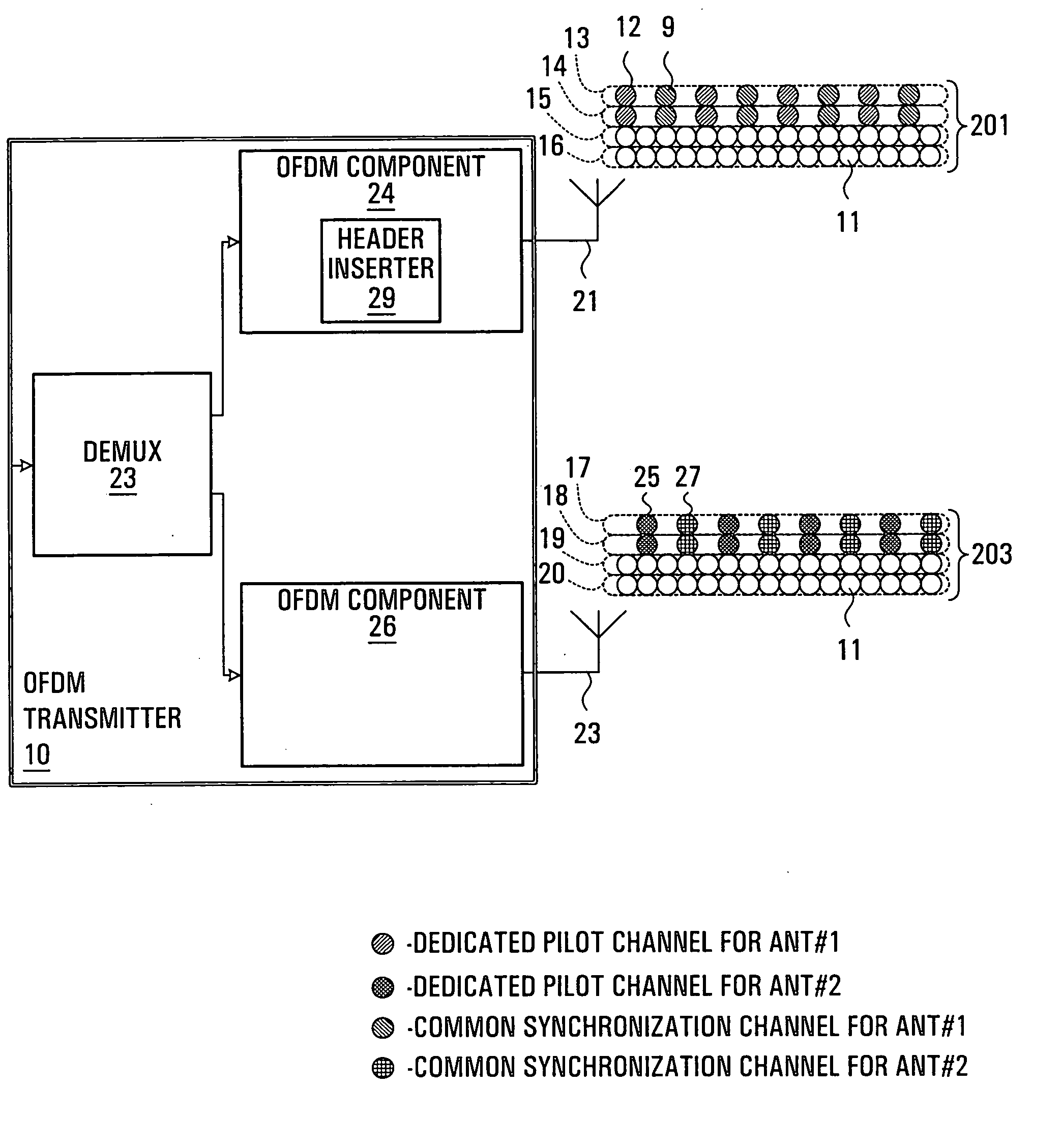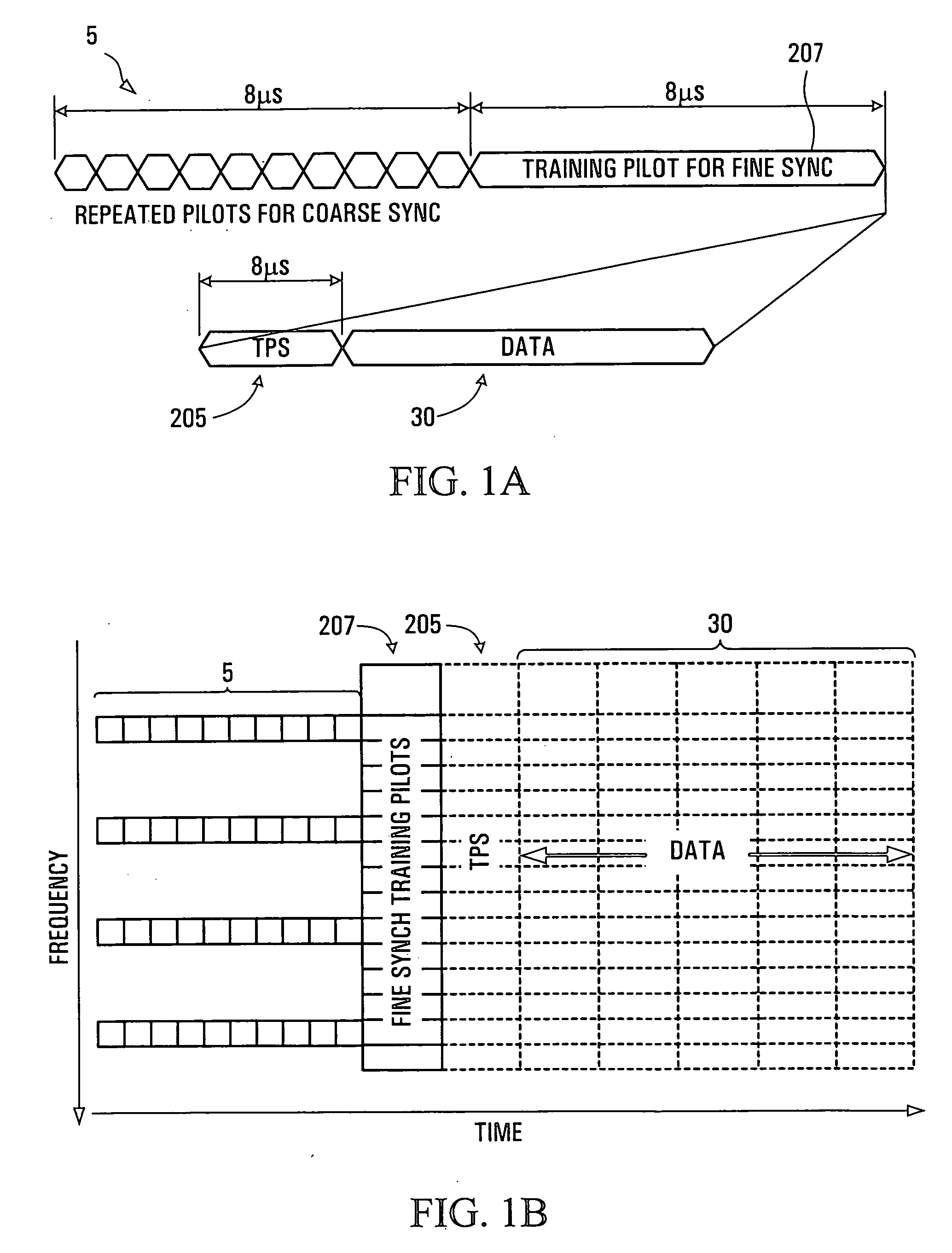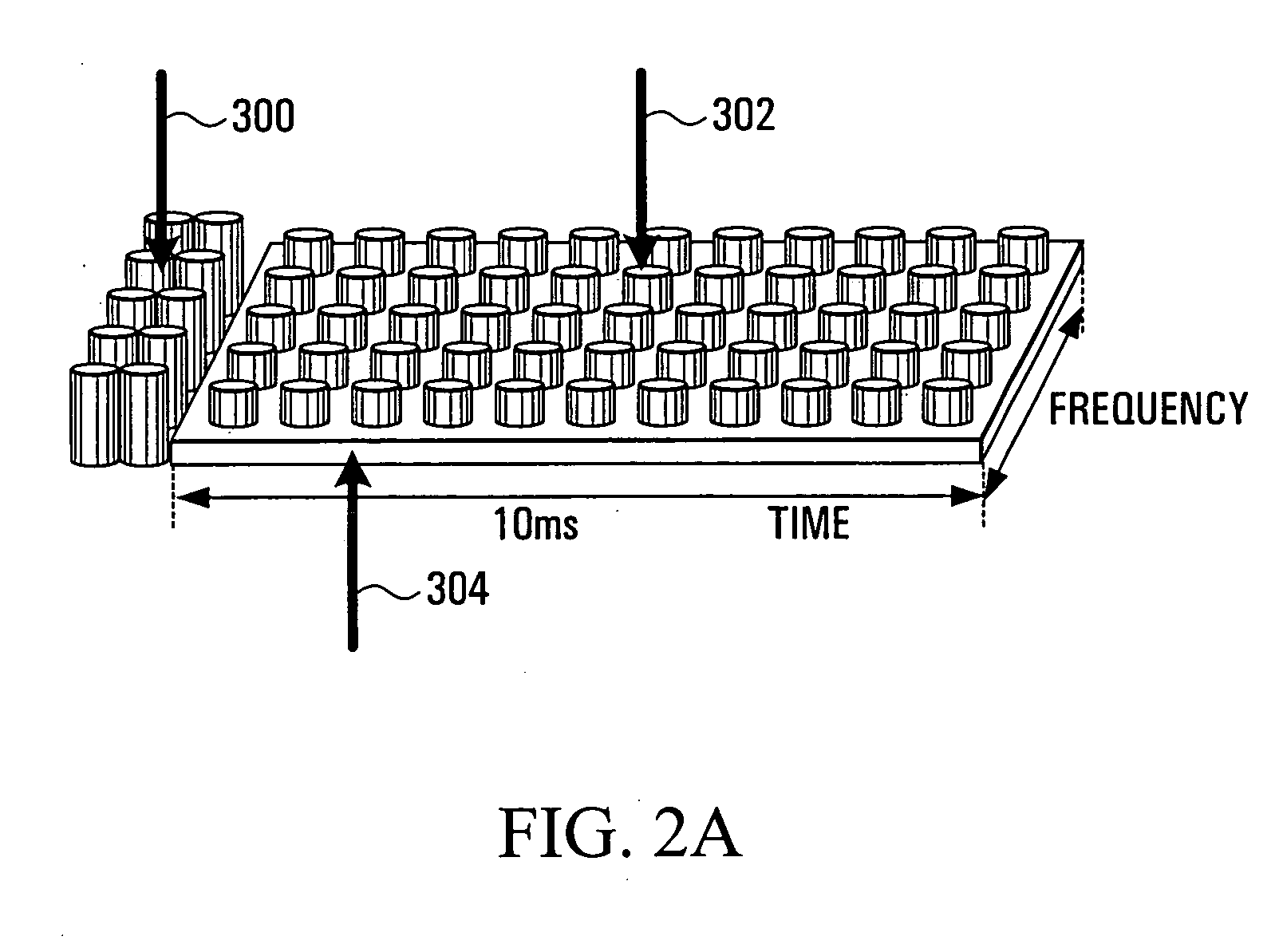Frame structure, system and method for OFDM communications
a frame structure and communication technology, applied in the field of cellular wireless communication systems, can solve the problems of inability of wireless lans to deal with ue mobility, difficult synchronization within mimo-ofdm (multi-input multiple output-ofdm) systems, and even more difficult reliability synchronization, so as to achieve efficient bts identification and fast and accurate initial acquisition
- Summary
- Abstract
- Description
- Claims
- Application Information
AI Technical Summary
Benefits of technology
Problems solved by technology
Method used
Image
Examples
Embodiment Construction
[0106] Referring now to FIG. 2A, an OFDM packet frame structure provided by an embodiment of the invention is shown. Transmit OFDM symbol streams are organised into such frames. Each frame consists of three major components: preamble 300, scattered pilots 302, and traffic data symbols 304. The insertion of the preamble allows UE (user equipment) to perform the following fundamental operations: fast BTS (base station) access, BTS identification and C / I ratio measurement, framing and timing synchronization, frequency and sampling clock offset estimation and initial channel estimation. The design of a frame preamble with minimized overhead is critical to maximum spectral efficiency and radio capacity.
[0107] Referring now to FIG. 2B, a frame hierarchy for MIMO-OFDM is organized according to an embodiment of the invention as follows: at the highest level are OFDM superframes 500 (two shown). The duration of the superframe is determined by the network synchronization period (for example ...
PUM
 Login to View More
Login to View More Abstract
Description
Claims
Application Information
 Login to View More
Login to View More - R&D
- Intellectual Property
- Life Sciences
- Materials
- Tech Scout
- Unparalleled Data Quality
- Higher Quality Content
- 60% Fewer Hallucinations
Browse by: Latest US Patents, China's latest patents, Technical Efficacy Thesaurus, Application Domain, Technology Topic, Popular Technical Reports.
© 2025 PatSnap. All rights reserved.Legal|Privacy policy|Modern Slavery Act Transparency Statement|Sitemap|About US| Contact US: help@patsnap.com



